-
 Bitcoin
Bitcoin $106,437.2012
0.82% -
 Ethereum
Ethereum $2,442.5287
0.82% -
 Tether USDt
Tether USDt $1.0005
-0.02% -
 XRP
XRP $2.1812
-0.27% -
 BNB
BNB $645.1327
0.45% -
 Solana
Solana $146.2379
0.39% -
 USDC
USDC $0.9999
-0.01% -
 TRON
TRON $0.2751
0.92% -
 Dogecoin
Dogecoin $0.1662
-0.23% -
 Cardano
Cardano $0.5827
-1.22% -
 Hyperliquid
Hyperliquid $37.5225
0.04% -
 Bitcoin Cash
Bitcoin Cash $479.0877
4.02% -
 Sui
Sui $2.7846
-3.27% -
 Chainlink
Chainlink $13.3576
0.84% -
 UNUS SED LEO
UNUS SED LEO $9.0252
-1.20% -
 Stellar
Stellar $0.2455
-1.07% -
 Avalanche
Avalanche $18.0680
-1.81% -
 Toncoin
Toncoin $2.8948
-1.07% -
 Shiba Inu
Shiba Inu $0.0...01164
-1.65% -
 Litecoin
Litecoin $85.0637
-0.06% -
 Hedera
Hedera $0.1526
-0.89% -
 Monero
Monero $316.2941
0.78% -
 Ethena USDe
Ethena USDe $1.0003
-0.04% -
 Polkadot
Polkadot $3.4113
-1.87% -
 Dai
Dai $1.0000
-0.01% -
 Bitget Token
Bitget Token $4.4488
5.16% -
 Uniswap
Uniswap $7.1740
3.09% -
 Pi
Pi $0.5968
11.43% -
 Pepe
Pepe $0.0...01010
-0.65% -
 Aave
Aave $264.3189
0.40%
Is it credible that the moving average crosses but the trading volume is extremely shrinking?
A moving average crossover with low volume may signal weak market conviction, requiring additional confirmation from volume indicators or order book analysis before acting.
Jun 25, 2025 at 07:28 pm
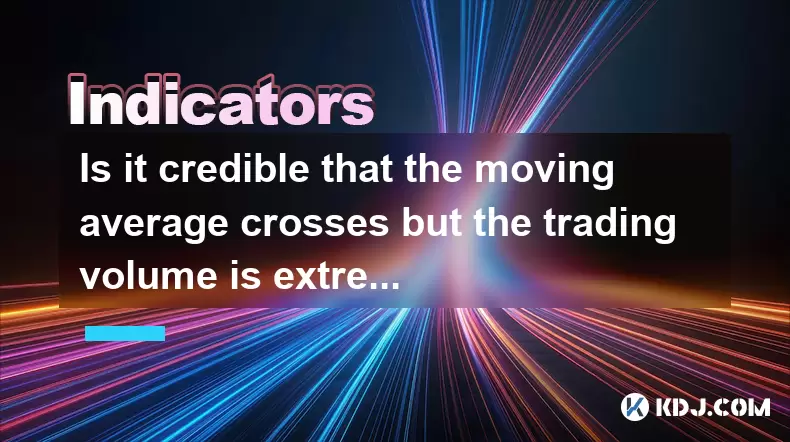
Understanding the Moving Average Crossover
A moving average crossover is one of the most widely used technical indicators in cryptocurrency trading. It typically involves two moving averages — a short-term (e.g., 9-day) and a long-term (e.g., 21-day). When the short-term crosses above the long-term, it's considered a bullish signal, while a cross below is seen as bearish.
However, in some cases, traders observe that the moving average crossover occurs when the trading volume is extremely low. This raises concerns about the credibility and reliability of such a signal. Since volume often reflects market participation and conviction, its absence can cast doubt on the strength of the price movement.
Moving average crossovers are not infallible and should be analyzed alongside other metrics like volume.
The Role of Trading Volume in Confirming Price Action
Volume plays a critical role in confirming the validity of any price-based signal. In traditional markets and crypto alike, a strong price move accompanied by high volume indicates that many participants are actively buying or selling. Conversely, a price shift with shrinking volume suggests weak interest and may indicate a false breakout or reversal trap.
When analyzing a moving average crossover, traders often look for volume confirmation to support the directional move. If the crossover coincides with unusually low trading volume, it could mean that the trend lacks momentum or that large players (whales) are manipulating the price without real market consensus.
Low volume during a moving average crossover can suggest that the trend lacks genuine support from market participants.
Possible Reasons Behind Shrinking Volume During Crossovers
There are several reasons why volume might shrink during a moving average crossover:
- Market indecision: Traders may be waiting for more clarity before committing capital.
- Whale manipulation: A few large holders could be pushing the price artificially without broad-based participation.
- Time of day or week: Certain periods, especially weekends or late-night hours, naturally see lower liquidity.
- Lack of news catalysts: Without significant events or announcements, volume tends to dry up.
These factors don’t necessarily invalidate the crossover but do highlight the need for additional analysis before making a trade decision.
Shrinking volume during a crossover may reflect market hesitation, lack of interest, or even manipulation.
How to Analyze Moving Average Crossovers With Low Volume
Analyzing a moving average crossover in the context of low volume requires a multi-dimensional approach. Here’s how you can evaluate it effectively:
- Check timeframes: Compare the crossover across multiple timeframes (e.g., 1-hour, 4-hour, daily charts).
- Use volume indicators: Overlay volume indicators like OBV (On-Balance Volume) or Volume Weighted Moving Average.
- Look at order books: Analyze depth charts to detect whether the price movement is driven by retail or institutional orders.
- Cross-reference with volatility indicators: Tools like Bollinger Bands or ATR can show whether the move is within normal ranges.
- Monitor on-chain data: Metrics like exchange inflows/outflows or whale movements can provide insight into real demand.
By combining these tools, traders can better assess whether a low-volume crossover is worth acting upon.
Traders should use multiple analytical tools to verify the legitimacy of a moving average crossover when volume is shrinking.
Practical Steps to Handle Low Volume Crossovers
Here are actionable steps you can take if you encounter a moving average crossover with shrinking volume:
- Do not enter a position immediately after the crossover
- Wait for a retest of the crossover level with increasing volume
- Place a stop-loss just beyond the recent swing high or low
- Set profit targets based on previous resistance/support levels
- Monitor social sentiment and macroeconomic news around the time of the crossover
These steps help mitigate the risk of falling into a false signal trap. Entering trades blindly on crossovers without volume confirmation can lead to repeated losses.
Patience and confirmation from multiple sources are essential when dealing with low-volume moving average crossovers.
Frequently Asked Questions
Q: Can a moving average crossover still work if volume is low?
Yes, it can still produce valid signals, but the probability of success decreases. Traders should treat such crossovers with caution and seek further confirmation from other indicators or chart patterns.
Q: What indicators pair well with moving averages during low-volume conditions?
Indicators like On-Balance Volume (OBV), Relative Strength Index (RSI), and Bollinger Bands complement moving averages well. These tools offer insights into momentum and potential reversals.
Q: Should I ignore all moving average crossovers with low volume?
No, you shouldn't ignore them completely. Instead, treat them as potential setups rather than confirmed signals. Wait for increased volume or price action confirmation before entering a trade.
Q: How does low volume affect the reliability of technical indicators in crypto?
Low volume reduces the reliability of most technical indicators because they rely on market participation to validate trends. In low-volume environments, price movements are more prone to being manipulated or misleading.
Disclaimer:info@kdj.com
The information provided is not trading advice. kdj.com does not assume any responsibility for any investments made based on the information provided in this article. Cryptocurrencies are highly volatile and it is highly recommended that you invest with caution after thorough research!
If you believe that the content used on this website infringes your copyright, please contact us immediately (info@kdj.com) and we will delete it promptly.
- Binance Lists Newton Protocol: Airdrop Ignites NEWT Token Surge!
- 2025-06-26 00:45:12
- SPX6900, Meme Coins, and DogWifHat Bulls: What's Happening?
- 2025-06-26 00:45:12
- Crypto Meme Coins: Riding the Upside Potential Wave
- 2025-06-26 00:25:12
- Moca Chain: Revolutionizing User Verification with Self-Sovereign Identity
- 2025-06-26 00:25:12
- Base Surges: User Activity and Institutional Momentum Heat Up!
- 2025-06-26 00:35:12
- Mango Network, Binance Alpha, and Token Airdrops: What You Need to Know
- 2025-06-26 00:35:12
Related knowledge
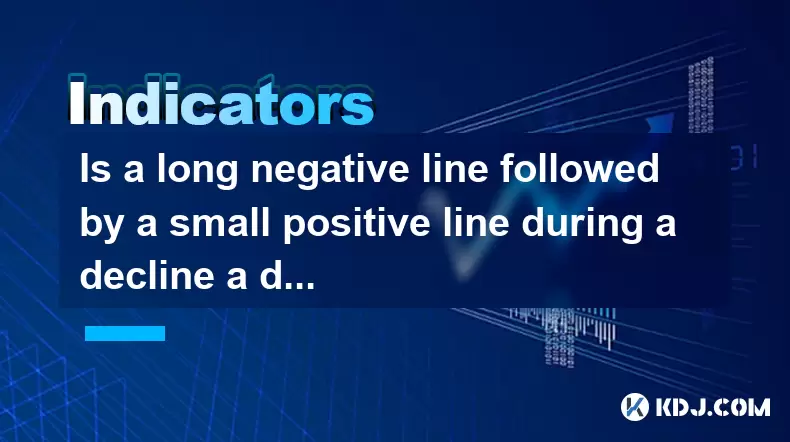
Is a long negative line followed by a small positive line during a decline a decline relay?
Jun 26,2025 at 12:21am
Understanding Candlestick Patterns in Cryptocurrency TradingIn the realm of cryptocurrency trading, candlestick patterns play a crucial role in analyzing price movements. These visual representations help traders identify potential reversals, continuations, or consolidation phases. One such pattern that often appears during downtrends is a long negative...
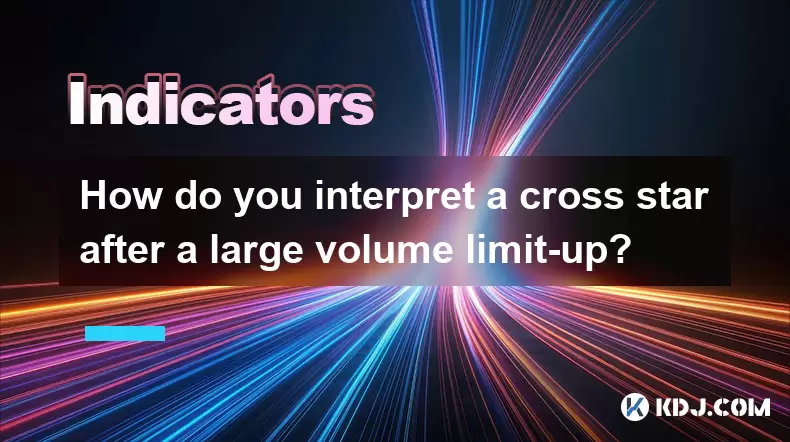
How do you interpret a cross star after a large volume limit-up?
Jun 25,2025 at 11:01pm
Understanding the Cross Star Pattern in Cryptocurrency ChartsIn cryptocurrency trading, candlestick patterns play a crucial role in technical analysis. One such pattern is the cross star, which typically appears as a candle with small real body and long upper and lower shadows. This pattern often signals market indecision and can indicate a potential re...

When the volume shrinks to 30% of the breakthrough volume when stepping back after breaking through the platform?
Jun 25,2025 at 09:49pm
Understanding Breakthrough Volume in Cryptocurrency TradingIn the world of cryptocurrency trading, volume is a crucial indicator that reflects market sentiment and price action. When a cryptocurrency breaks through a key resistance level or a consolidation platform, it often comes with a surge in trading volume. This breakthrough volume signals strong b...
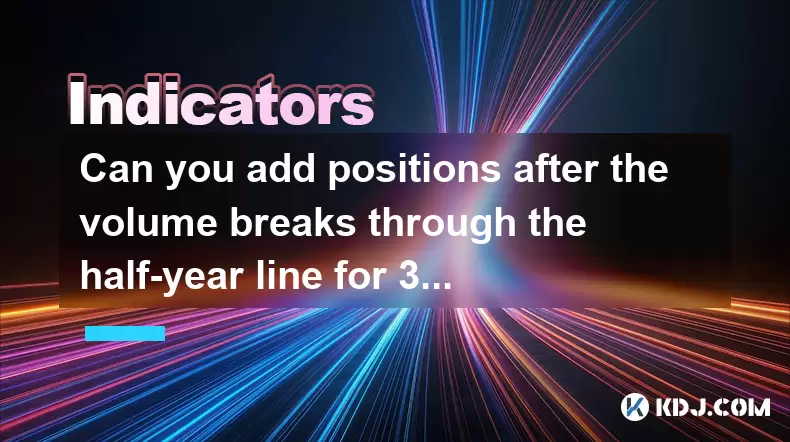
Can you add positions after the volume breaks through the half-year line for 3 consecutive days with reduced volume?
Jun 25,2025 at 08:00pm
Understanding the Half-Year Volume Line in Cryptocurrency TradingIn cryptocurrency trading, technical indicators often guide traders in making decisions. One such metric is the half-year volume line, which refers to the average daily trading volume over a 180-day period. When traders refer to a volume breakout above this line, they are observing whether...
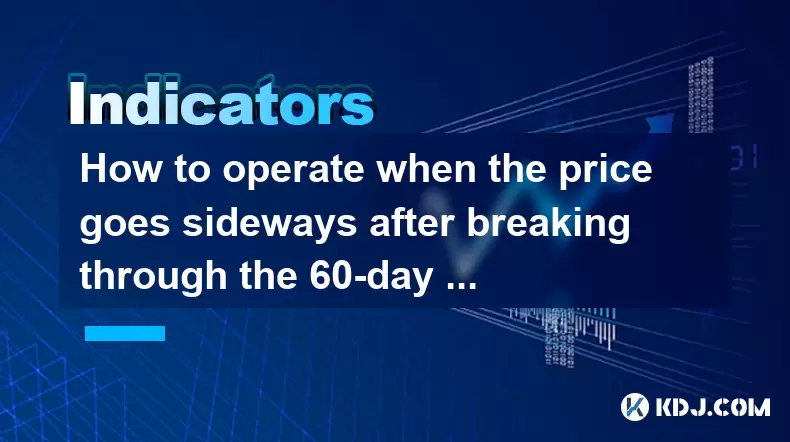
How to operate when the price goes sideways after breaking through the 60-day line with large volume?
Jun 25,2025 at 07:08pm
Understanding the 60-Day Line Breakout with High VolumeWhen a cryptocurrency asset breaks through its 60-day moving average line with large volume, it often signals a potential shift in momentum. This kind of breakout typically suggests that institutional or large retail traders are entering the market aggressively. However, when the price starts to mov...
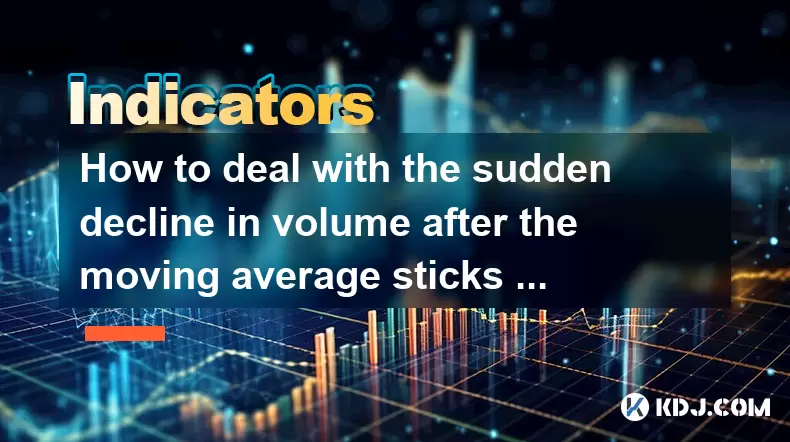
How to deal with the sudden decline in volume after the moving average sticks together?
Jun 25,2025 at 06:35pm
Understanding the Moving Average Convergence and Its ImplicationsIn the world of cryptocurrency trading, moving averages (MAs) are essential tools used to identify trends and potential reversals. When multiple moving averages converge or 'stick together,' it often indicates a period of consolidation or indecision in the market. This phenomenon can be ob...

Is a long negative line followed by a small positive line during a decline a decline relay?
Jun 26,2025 at 12:21am
Understanding Candlestick Patterns in Cryptocurrency TradingIn the realm of cryptocurrency trading, candlestick patterns play a crucial role in analyzing price movements. These visual representations help traders identify potential reversals, continuations, or consolidation phases. One such pattern that often appears during downtrends is a long negative...

How do you interpret a cross star after a large volume limit-up?
Jun 25,2025 at 11:01pm
Understanding the Cross Star Pattern in Cryptocurrency ChartsIn cryptocurrency trading, candlestick patterns play a crucial role in technical analysis. One such pattern is the cross star, which typically appears as a candle with small real body and long upper and lower shadows. This pattern often signals market indecision and can indicate a potential re...

When the volume shrinks to 30% of the breakthrough volume when stepping back after breaking through the platform?
Jun 25,2025 at 09:49pm
Understanding Breakthrough Volume in Cryptocurrency TradingIn the world of cryptocurrency trading, volume is a crucial indicator that reflects market sentiment and price action. When a cryptocurrency breaks through a key resistance level or a consolidation platform, it often comes with a surge in trading volume. This breakthrough volume signals strong b...

Can you add positions after the volume breaks through the half-year line for 3 consecutive days with reduced volume?
Jun 25,2025 at 08:00pm
Understanding the Half-Year Volume Line in Cryptocurrency TradingIn cryptocurrency trading, technical indicators often guide traders in making decisions. One such metric is the half-year volume line, which refers to the average daily trading volume over a 180-day period. When traders refer to a volume breakout above this line, they are observing whether...

How to operate when the price goes sideways after breaking through the 60-day line with large volume?
Jun 25,2025 at 07:08pm
Understanding the 60-Day Line Breakout with High VolumeWhen a cryptocurrency asset breaks through its 60-day moving average line with large volume, it often signals a potential shift in momentum. This kind of breakout typically suggests that institutional or large retail traders are entering the market aggressively. However, when the price starts to mov...

How to deal with the sudden decline in volume after the moving average sticks together?
Jun 25,2025 at 06:35pm
Understanding the Moving Average Convergence and Its ImplicationsIn the world of cryptocurrency trading, moving averages (MAs) are essential tools used to identify trends and potential reversals. When multiple moving averages converge or 'stick together,' it often indicates a period of consolidation or indecision in the market. This phenomenon can be ob...
See all articles























































































